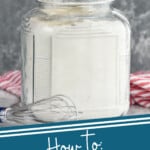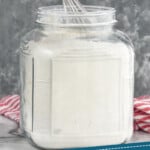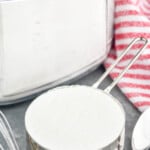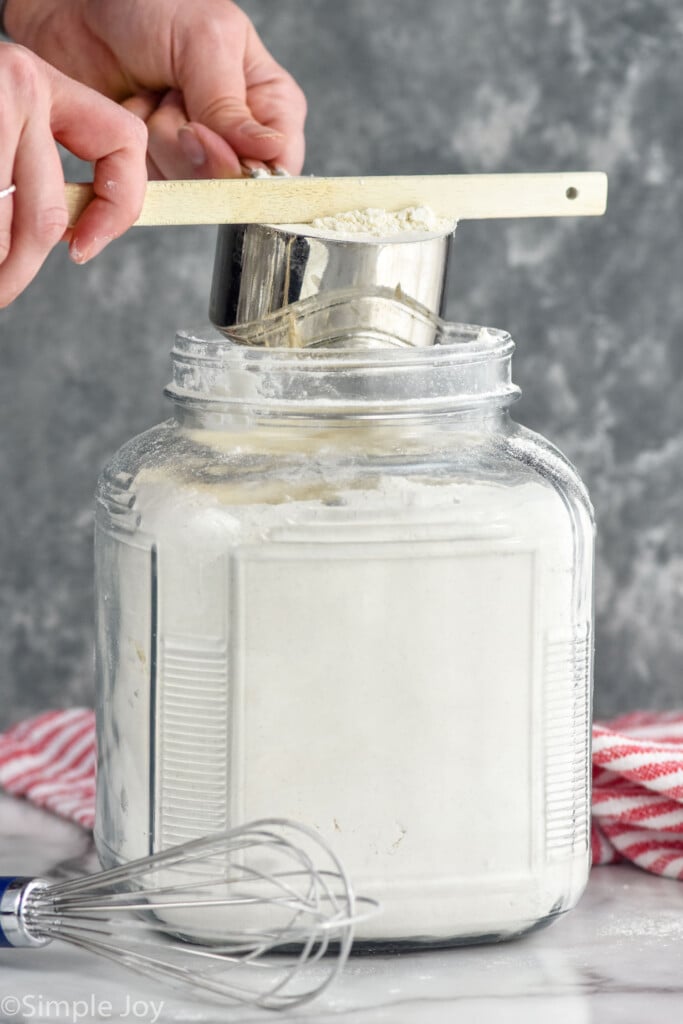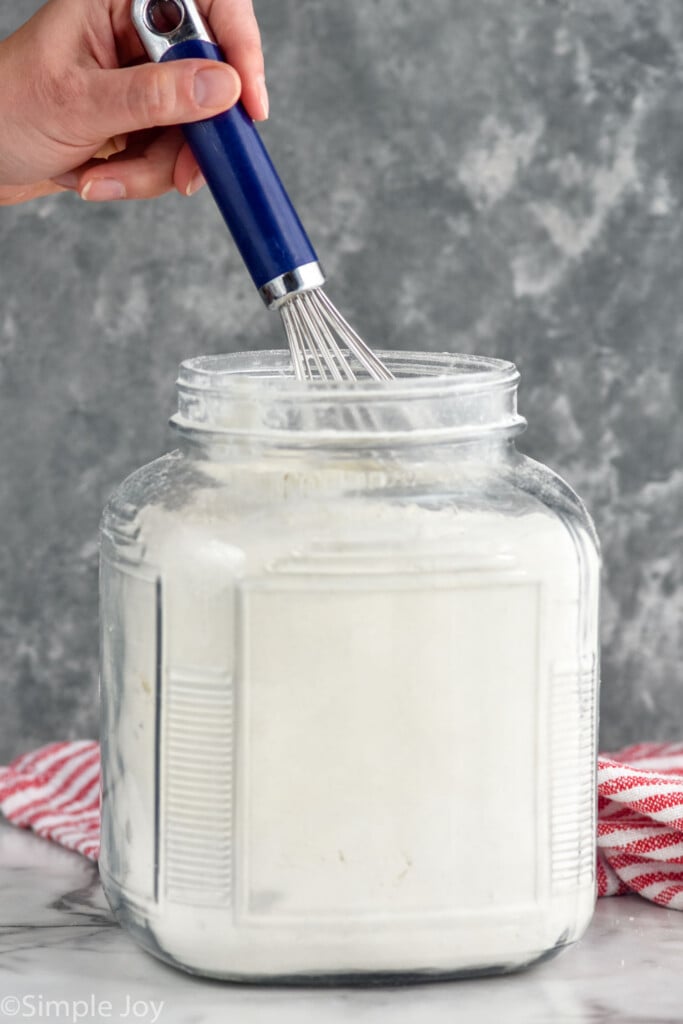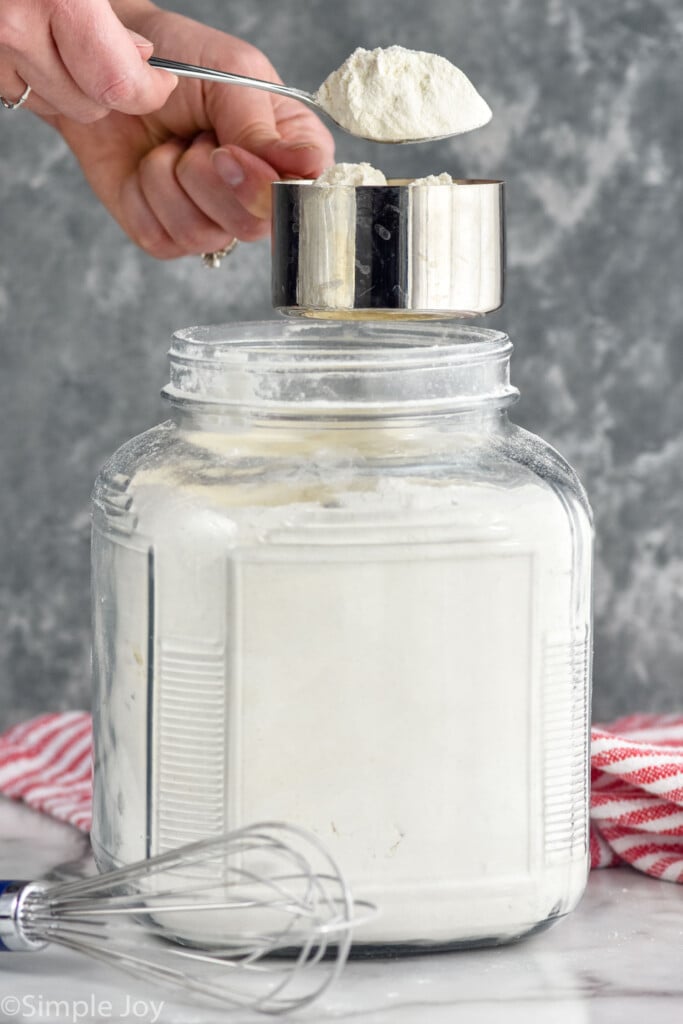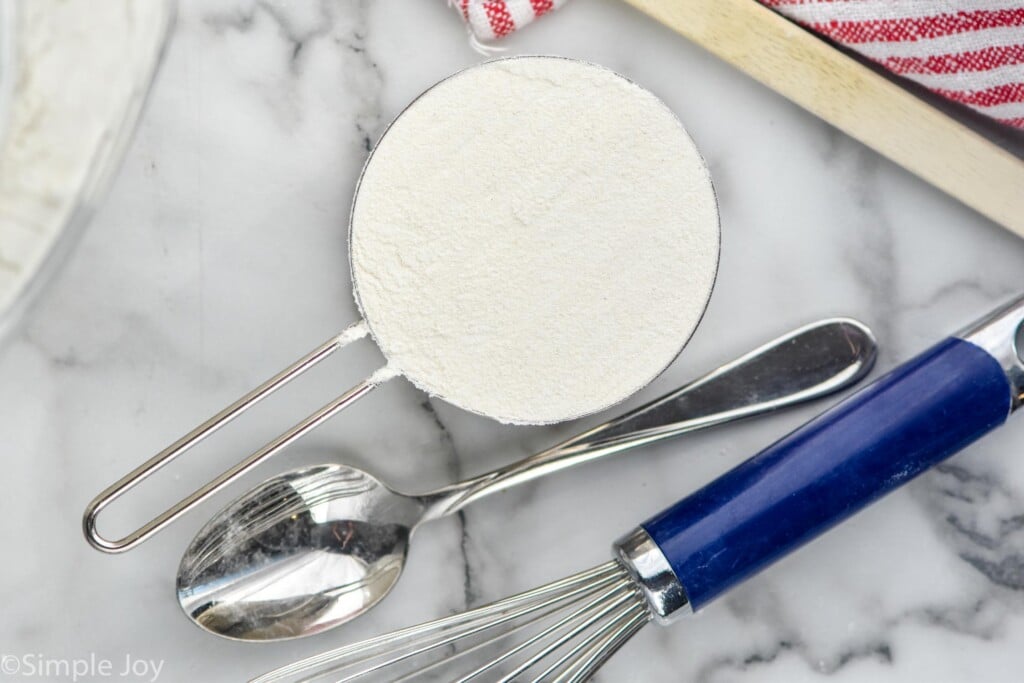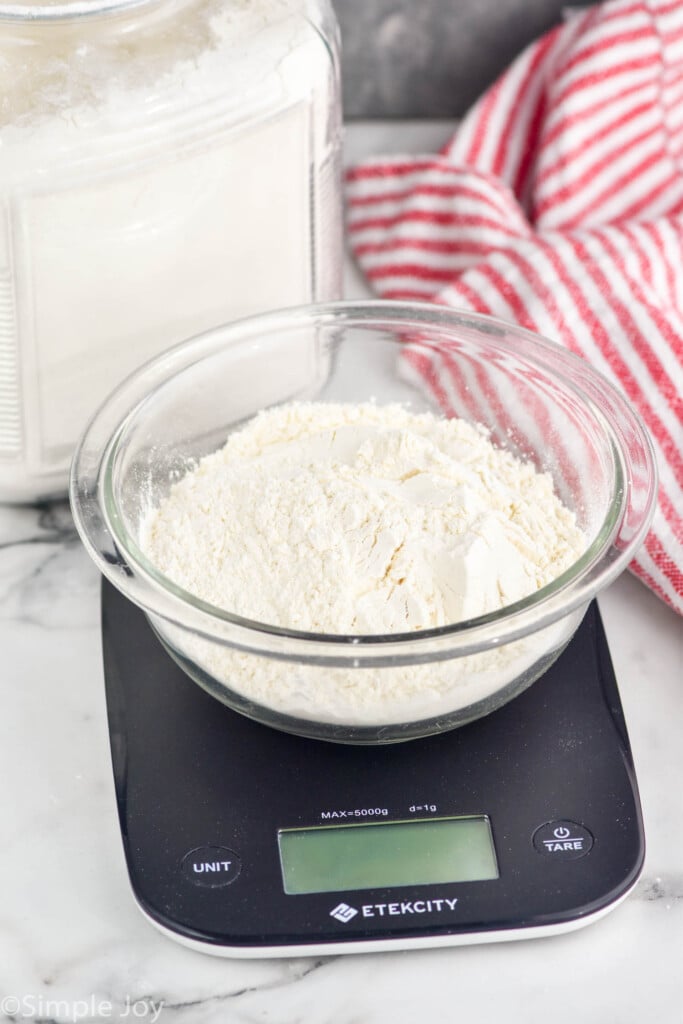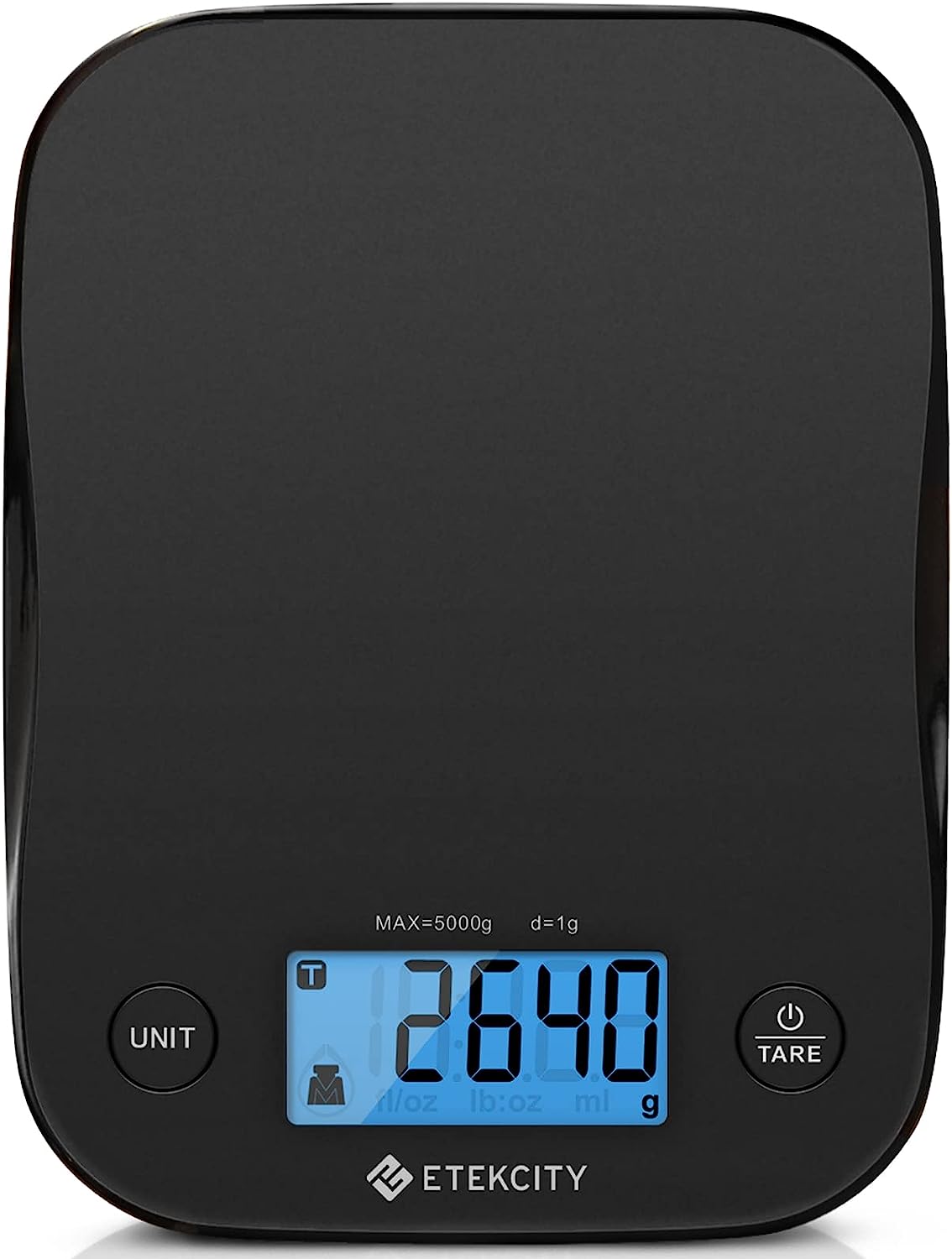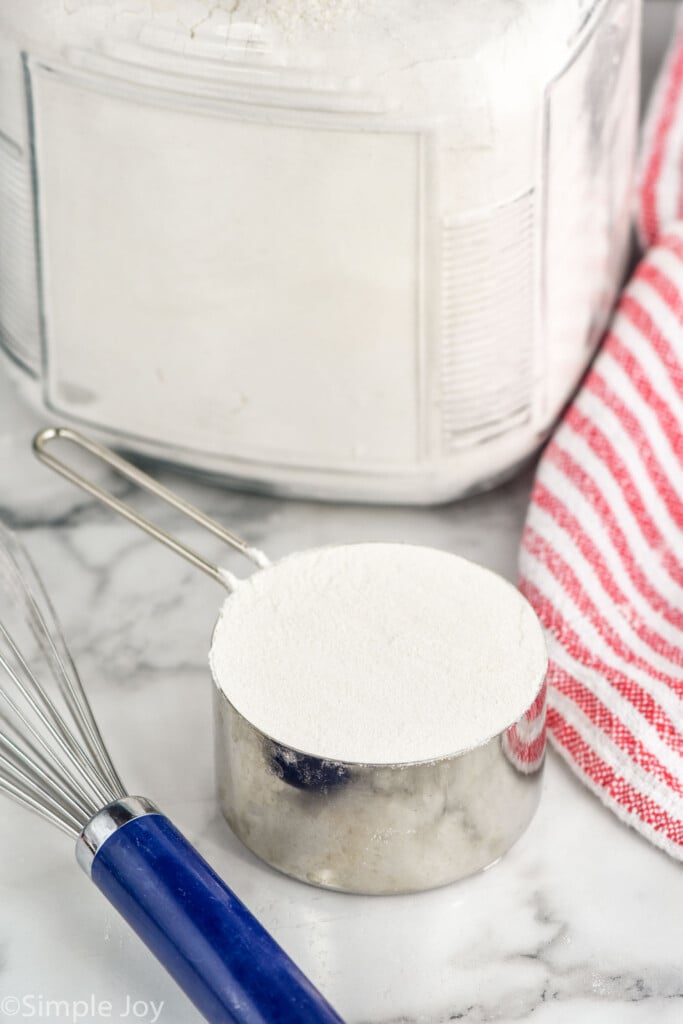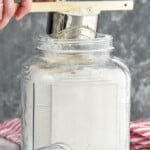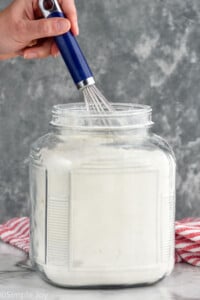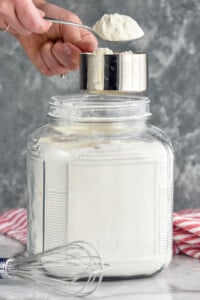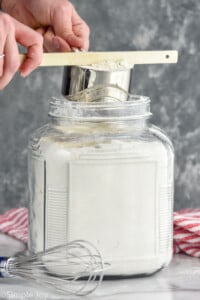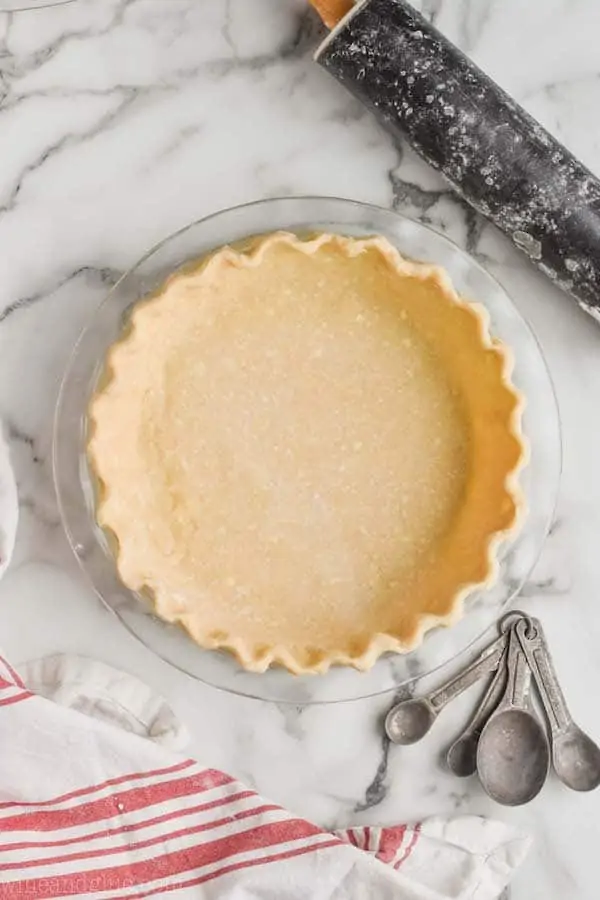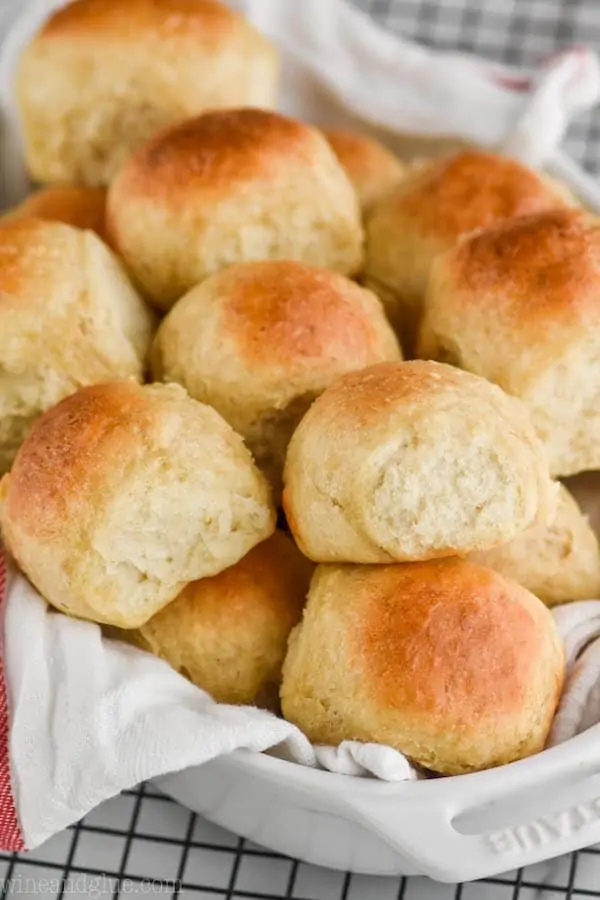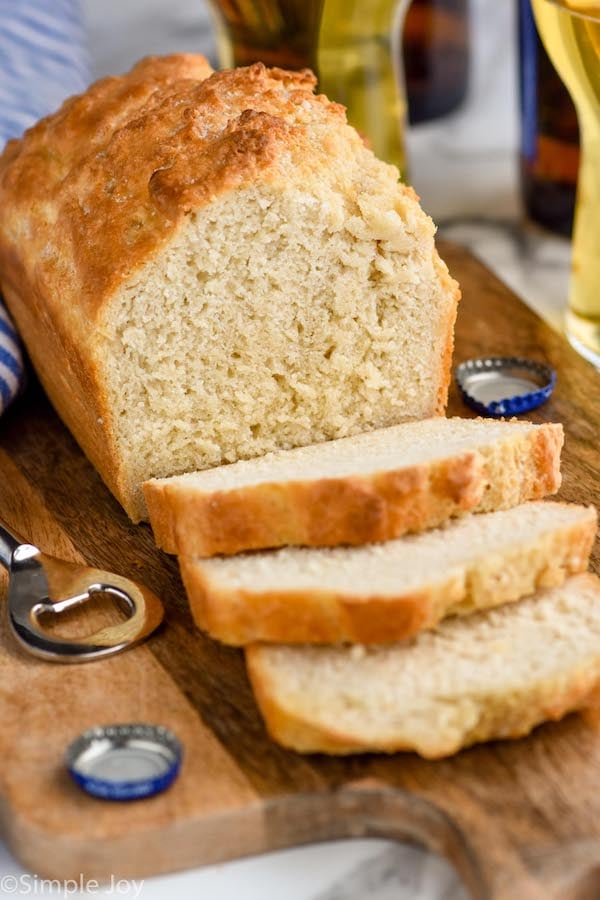Why Measuring Flour Correctly is Important
Since baking is a chemical reaction, using an incorrect ratio of ingredients can throw off the end result. Adding too much or too little flour can truly ruin a recipe. Too much can lead to a dry and dense baked item, for example, a cookie that won’t spread. While using a food scale is the most accurate way to get the correct amount, following these simple steps will ensure you get the accurate amount of flour by using measuring cups. Scooping flour directly from the container you store it in can pack the flour. This can result in as much as 25% more flour than the recipe calls for. Additionally, if you use a glass measuring cup (which are intended for liquid) you will most definitely get an inaccurate amount.
Tips and Tricks
Avoid scooping: Do not scoop the flour directly from the bag or container using the measuring cup. This can lead to compacted flour, which will result in more than you need. Use dry measuring cups: Make sure you are using dry measuring cups specifically designed for dry ingredients like flour. Liquid measuring cups have a different shape and can lead to inaccurate measurements. Don’t pack it: Some ingredients, like brown sugar, should be packed into the measuring cups. Flour is not one of them. Don’t press it down. Sift if Necessary: If your recipe calls for sifted flour, sift it after measuring. Sifting helps break up any clumps and adds air, contributing to a lighter texture in your baked goods.
If you use these steps to measure flour for your next recipe, leave a comment and let me know. I love hearing from you! Store your flour in a cool, dark place and label your container with the type of flour and the date of purchase so you know when it may be time to replace it with fresh flour.
Easy Banana Cake Recipe Snickerdoodles Cheddar Bay Biscuits

